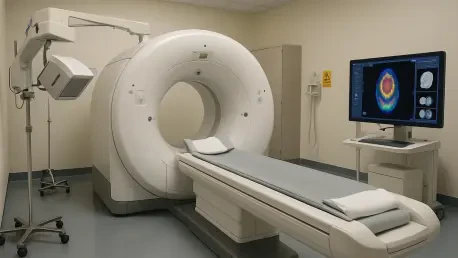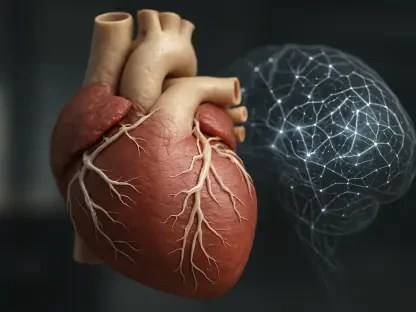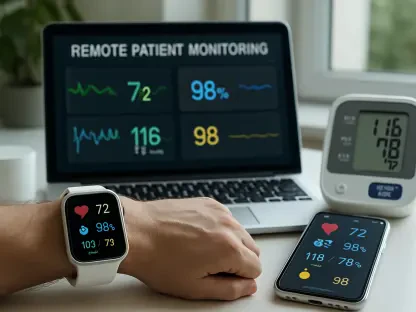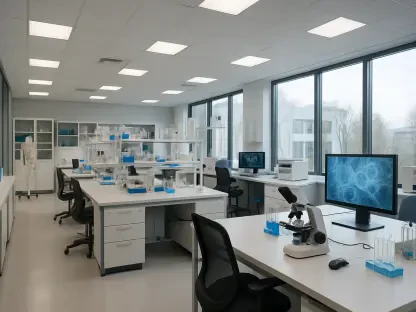In a world where personalized medicine is rapidly becoming the cornerstone of effective healthcare, the challenge of accurately diagnosing and treating complex conditions like cancer has never been more pressing, and theranostic imaging stands at the forefront of this transformation. Theranostic imaging, which merges diagnostic precision with therapeutic intervention, offers hope for tailored treatments that can significantly improve patient outcomes. A groundbreaking development in this field has emerged with the installation of an advanced imaging system at a leading medical institution in Germany, promising to redefine the standards of nuclear medicine. This innovation tackles the intricate demands of imaging radioisotopes used in targeted therapies, paving the way for faster, more accurate scans and individualized care plans. The impact of such technology extends beyond clinical applications, influencing research and the broader landscape of healthcare technology with its potential to address unmet needs in patient management.
Unveiling Cutting-Edge Technology
Breaking New Ground in Imaging Capabilities
The arrival of the AnyScan® TRIO-TheraMAX SPECT/CT system at Heidelberg University Hospital marks a significant milestone in the evolution of theranostic imaging. Designed to handle the complexities of radioisotopes like 177Lu, 225Ac, 212Pb, and 131I, which emit a mix of alpha, beta, and high-energy gamma photons, this system offers unparalleled quantitative imaging and dosimetry. Unlike traditional SPECT/CT platforms, it excels in capturing data from challenging isotopes, ensuring that therapies involving novel radiopharmaceuticals can be monitored with precision. Experts at the hospital have noted its ability to drastically cut down scan times for whole-body quantitative imaging in therapies using 225Ac, while also boosting capacity for routine scans critical to therapy planning. This leap forward not only enhances clinical efficiency but also supports the growing field of radioligand therapies, where accurate imaging is vital for successful outcomes and patient safety.
Engineering Excellence for Superior Performance
At the heart of this technological advancement lies a design that prioritizes sensitivity and resolution, setting a new benchmark in nuclear medicine. Featuring three large-surface detectors with full 360-degree angular coverage, the system surpasses conventional setups with a remarkable 300% sensitivity gain over dual-detector models. Its thick NaI crystals are optimized for detecting high-energy photons, while a high-density sensor arrangement delivers spatial resolution akin to PET imaging. This translates to ultra-fast whole-body scans, completing assessments for low-count rate therapies like 225Ac-PSMA in under 30 minutes across an extensive axial field of view. Moreover, the capability to perform total-body SPECT/CT imaging up to 2 meters in just 10 minutes for therapies such as 177Lu or routine bone scans underscores its versatility. Such features ensure that both diagnostic and therapeutic processes are streamlined, offering a glimpse into the future of precision medicine.
Transforming Clinical and Research Landscapes
Enhancing Patient Care Through Precision
The deployment of this innovative SPECT/CT system at a premier medical facility highlights its transformative potential in patient care within the realm of targeted radionuclide therapies. By providing faster and more accurate imaging, it enables clinicians to develop highly individualized treatment plans that align with each patient’s unique needs. The system’s extreme sensitivity facilitates rapid data acquisition, which is particularly crucial for patients undergoing complex therapies where time is of the essence. Beyond immediate clinical benefits, this technology supports the inclusion of novel radiopharmaceuticals in trials, expanding the scope of possible treatments. The ability to reduce scan durations while maintaining high-quality outputs also means that more patients can be accommodated, addressing capacity constraints in busy nuclear medicine departments and ultimately improving access to cutting-edge care.
Driving Innovation in Nuclear Medicine Research
Equally significant is the role of this advanced imaging system in propelling research forward, as it equips investigators with tools to explore new frontiers in theranostic applications. Its adaptability across various nuclear medicine procedures ensures that it can support a wide range of studies, from routine diagnostics to experimental therapies. A standout feature, the automated RoboCart™ system, streamlines operations by enabling rapid collimator exchanges across all detector heads in under five minutes, facilitating seamless shifts between different isotope applications. This efficiency is invaluable for research environments where flexibility and speed are critical to testing hypotheses and validating new approaches. As the system continues to demonstrate its impact, it fosters a deeper understanding of how imaging can be integrated with therapy, setting a foundation for future breakthroughs that could redefine standards in personalized medicine.
Reflecting on a Milestone Achievement
Looking back, the successful integration of the TheraMAX SPECT/CT system at Heidelberg University Hospital represented a defining moment in the journey of nuclear medicine. Its unmatched combination of sensitivity, resolution, and speed addressed critical challenges in theranostic imaging, while its versatility proved instrumental across diverse clinical and research settings. Moving forward, the focus should center on leveraging this technology to further refine treatment protocols and expand access to innovative therapies. Collaborations between medical institutions and technology developers will be essential to unlock additional capabilities and adapt to emerging needs. By continuing to prioritize precision and efficiency, the field can build on this achievement to ensure that patients benefit from the most advanced, tailored care possible, marking a lasting impact on the landscape of healthcare innovation.









